In December 1871, A 12-year-old Aboriginal boy named Jupiter Mosman is looking for lost horses that had bolted in a thunderstorm; he bends to get a drink of water and sees something sparkling in the sandy river bed. Gold! By February 1872, the goldfield known as Charters Towers is registered and the rush is on to this new shanty town in North Queensland. By the end of 1872, calico has given way to more permanent housing for the 3,000 residents! The Charters Towers Goldfields is dotted with small townships centred around gold mines - Millchester, Queenton, Black Jack, Just in Time, Mt Leyshon; while along the local creeks alluvial mining camps have sprung up.
For many thousands of years before the first gold was found, the ancestors of the Gudjal First Nations people lived in the Charters Towers region. For Aboriginal people that have ancestral ties to this area, the country and their connection to the land is as important as ever. For more information on Indigenous Queensland history, check out our interactive map here.
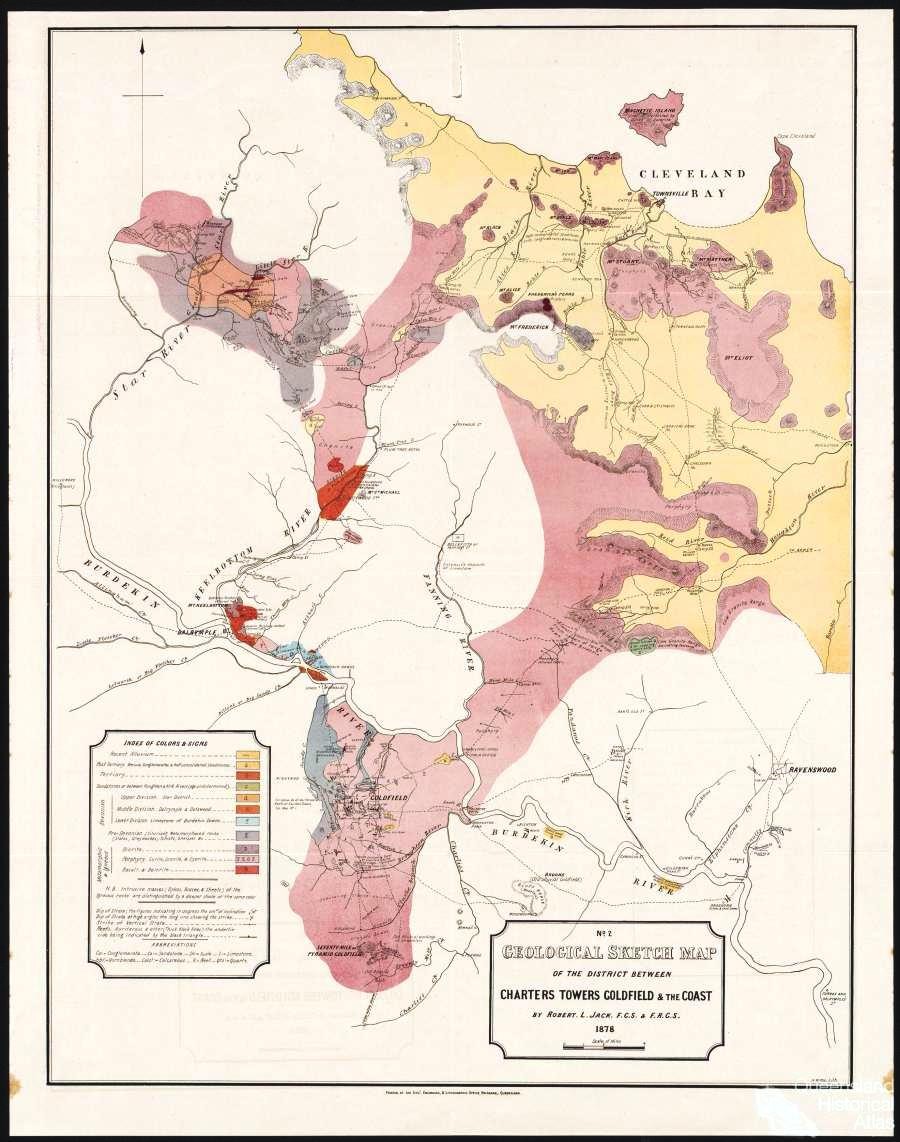
Geological Sketch Map of the district between Charters Towers Goldfield and the Coast, R L Jack (1878)
In 1877, Charters Towers is gazetted and surveyed as the second municipality in Queensland - by this time with all of the untapped riches of the earth, it is known as "The World". One square mile is set aside for this new town and soon building such as banks, stores and hotels line the main thoroughfares of Gill, Mosman and Bow Streets. There are 21 hotels in Mosman Street but the main street of Gill Street extending through to Millchester Road is lined with over 100 hotels, inns and wayside shanties to quench the thirst of miners.
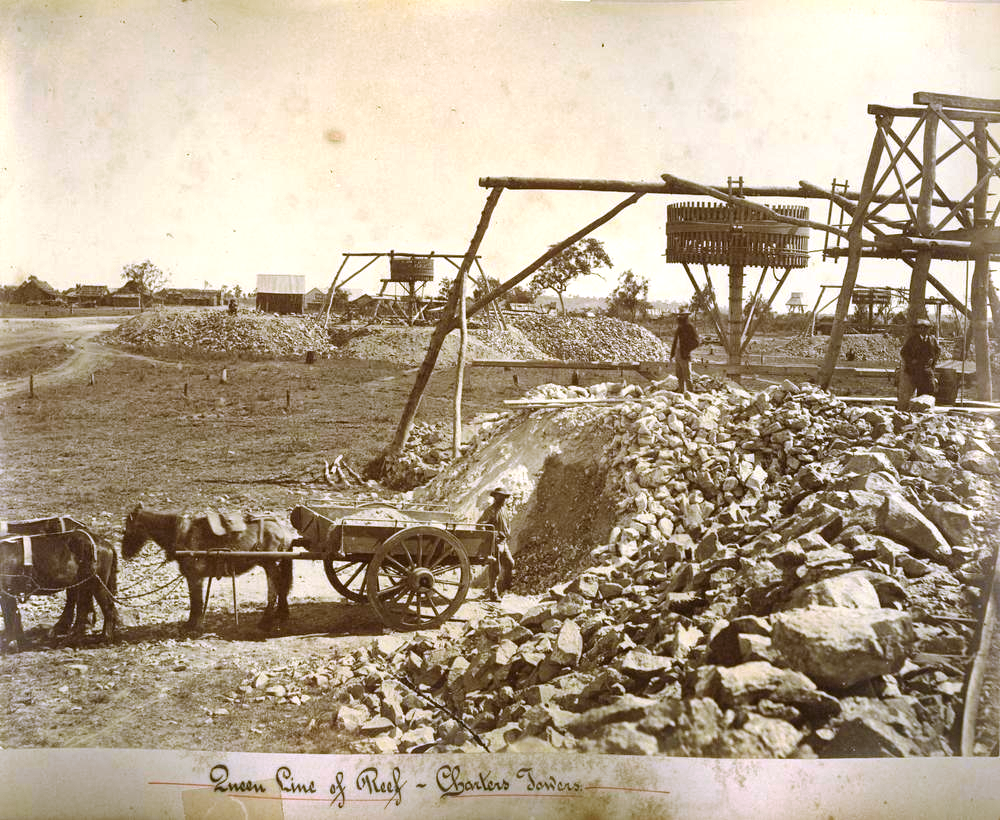
Queen Life of Reef, Charters Towers (1878). John Oxley Library, State Library of Queensland. Neg 100685
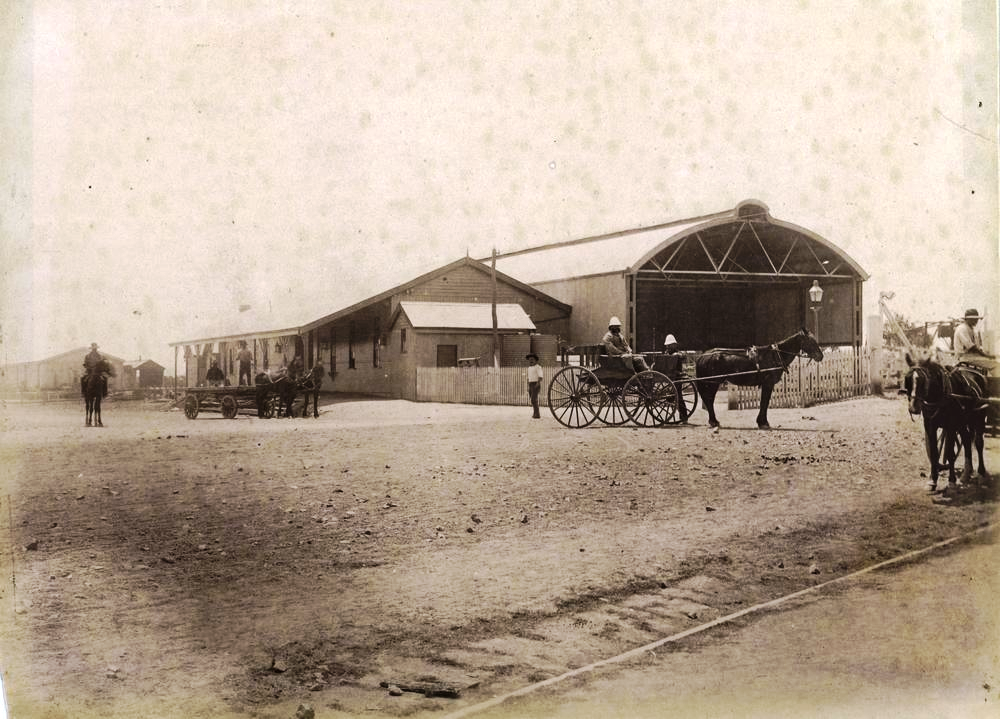
Charters Towers Railway Station (1888). John Oxley Library, State Library of Queensland. Neg 75511
During 1888-89, the Charters Towers Stock Exchange and Royal Arcade were constructed at the Northern end of Gill Street for local businessman and civic leader Alexander Malcolm. The gold rush continued, reaching its' peak in 1899 - during this time the Stock Exchange was linked to the outside world via telegraph and had 2-3 calls per day, six days a week!
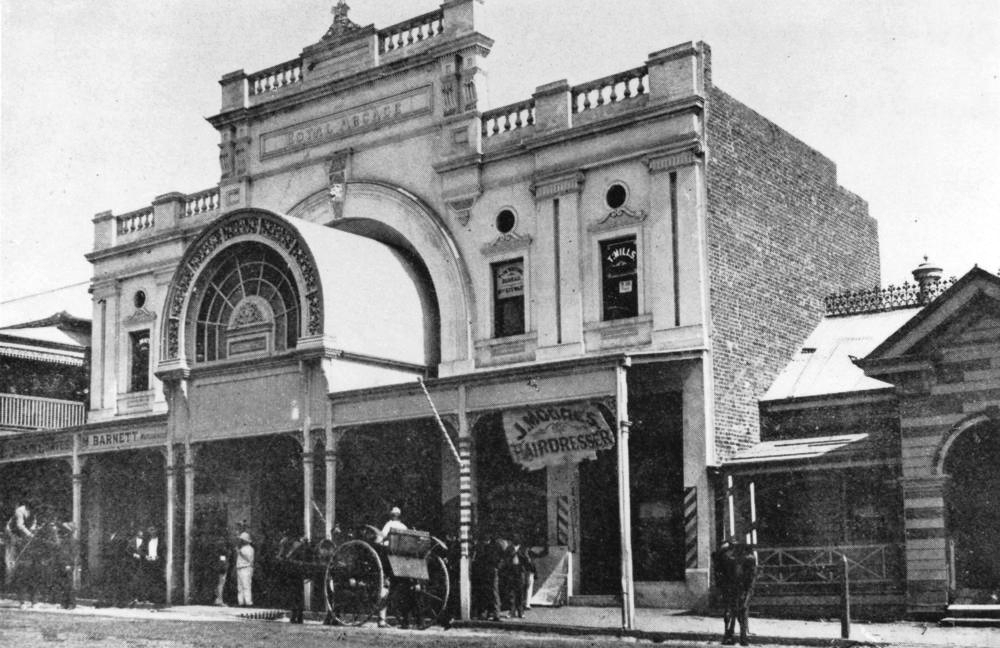
In 1897, the Editor of the Northern Mining Register proclaimed:
"Streets of fine shops and residences have sprung up, cold air stores, telephones, electric light, gaslight, electric fans and other adjuncts of an up to date civilisation are employed, and 20,000 souls now sleep nightly within a radius of 4 miles of the spot where the prospectors pitched their first camp a little over 25 years ago."
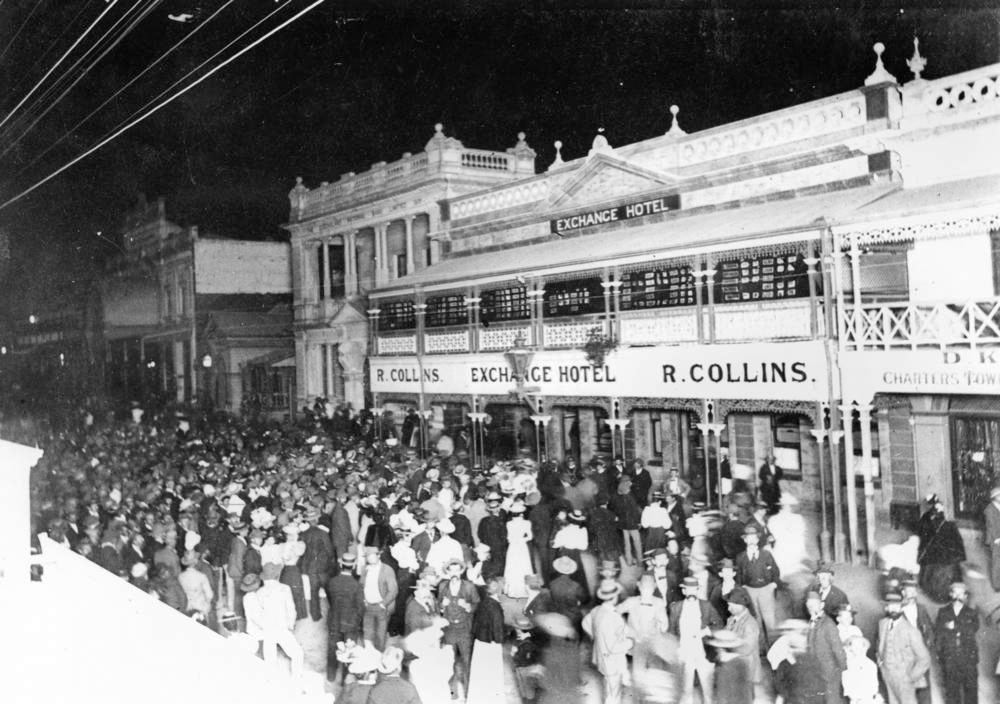
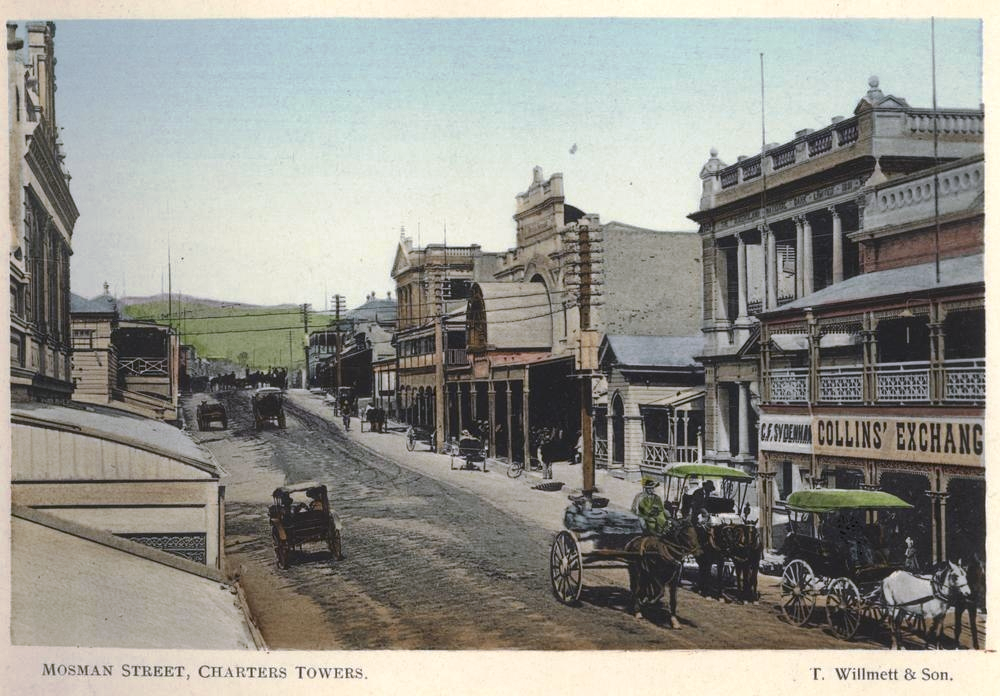
The town became a civic and service centre for the region as well as an educational hub with several schools. The first of the private schools established was St Mary's Catholic primary, which opened in 1892. In 1902, a Catholic boys' school, Mt Carmel, was opened. A State High School was opened in 1912, followed by a Methodist/Presbyterian Boys' College (1919) and Girls' College (1920), and Church of England boys' and girls' schools in 1921. The names of All Soul's, Blackheath, Thornburgh, Mt Carmel, Blackheath are well-known private schools in Charters Towers along with state schools such as Richmond Hill, Girls Central State School and Central Boys' School all have a rich history across the region.
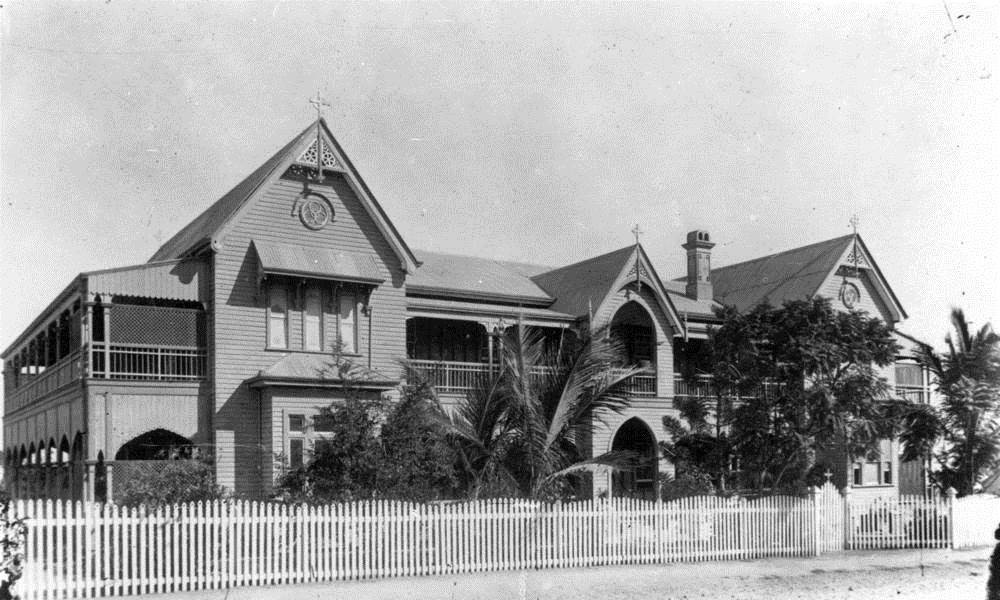
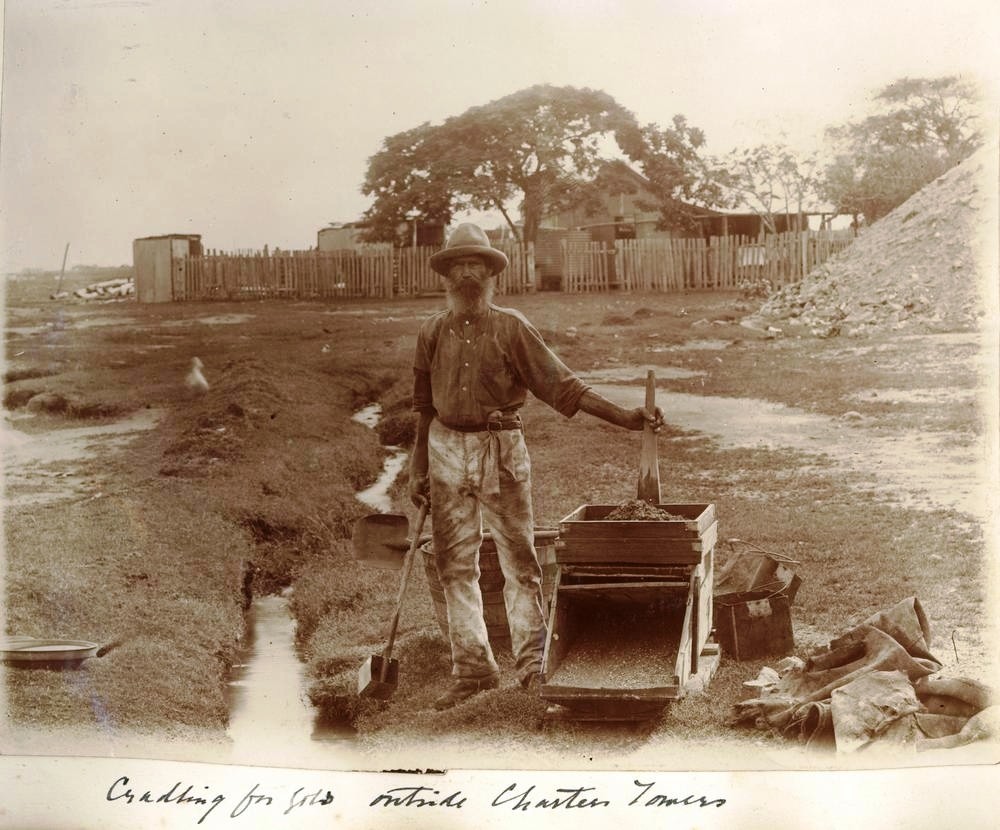
Some gold-mining continued in the region in the workings around long-forgotten townships such as Rishton, The Broughton and King's Gully, but the returns were poor. However, in 1920, during these declining years, the largest reported gold nugget was found at Charters Towers, weighing an impressive 143 ounces (4,450 grams) by Tom Hoy, a Chinese prospector. This nugget known as the "Prince of Wales Nugget" was purchased by the Charters Towers Hospital Board and raffled as an Art Union Prize to raise funds for the purchase of an x-ray machine.
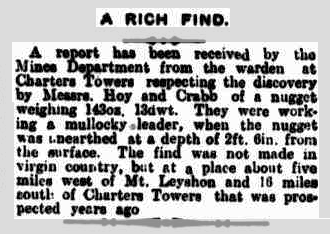
The heritage buildings from Charters Towers' boom times saw a revival of another type; filmmakers loved the authenticity of the old buildings and Charters Towers became the backdrop for several movies including "The Irishman" (1978). The northern end of Gill Street retained much of its' historical character of the 1890's so the film's producers simply covered the bitumen with gravel to reproduce the era. A similar approach was taken in 2013 when a documentary on Breaker Morant was filmed in Charters Towers.
Following the advent of new mining techniques in the 1980's, Charters Towers has experienced another gold rush! In the boom times, the goldfields in the region were a hive of shallow tunnels or alluvial mining along the watercourses; so much gold was being found, there was no need to dig deeper! Open Cut mining is the preferred method for gold extraction and the former goldfield of Mt Leyshon has been transformed into a modern open cut mine and extracted record yields in the past decade.
Today Charters Towers still retains the character of those boom times - the streetscape of Gill Street and the mining heritage attract tourists from across the globe to visit the town once known as "The World".
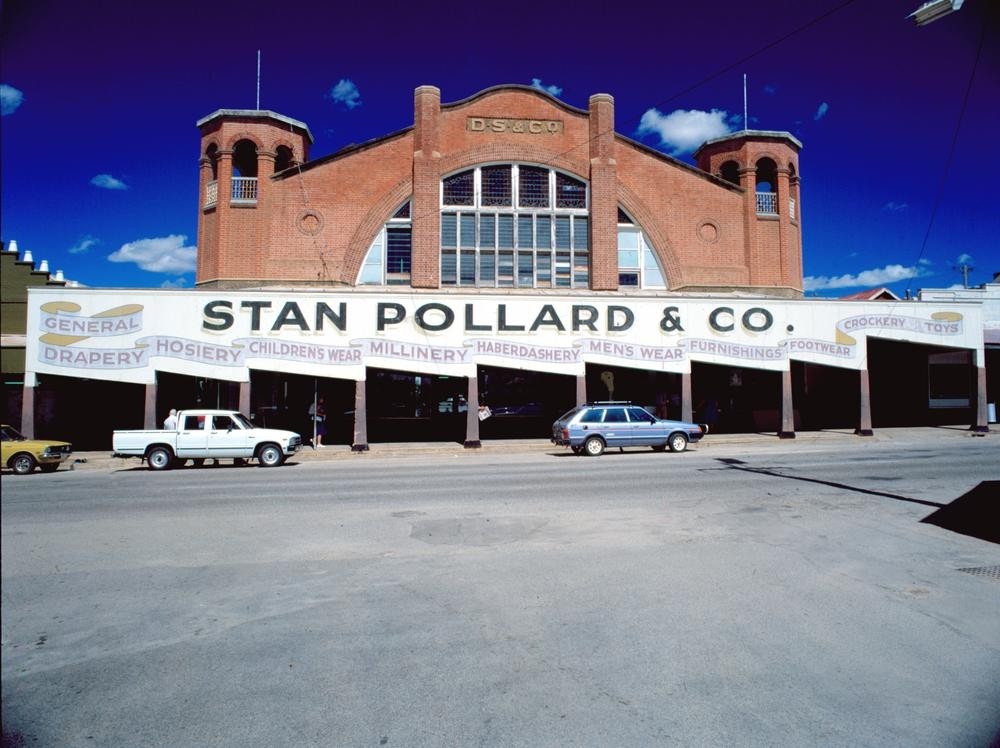
Sources from John Oxley Library:
- Willmett's Album of Charters Towers Views 1904 - APA-27,
- Allom & Bailey Photograph Album ca 1888 - APA-6
- Geological sketch map of the district between Charters Towers goldfield & the coast 1878 - RBM 844.36 1878 00032 E
- The Charters Towers gold mines : a descriptive and historical account of the town and gold field of Charters Towers 1892 - NAT 622.3422 cha
- Ron and Ngaire Gale Collection - 7435
- One square mile : re-discovering the buildings and life of Mosman, Gill and Bow streets, Charters Towers, North Queensland - J 994.36 BRU
Comments
Your email address will not be published.
We welcome relevant, respectful comments.